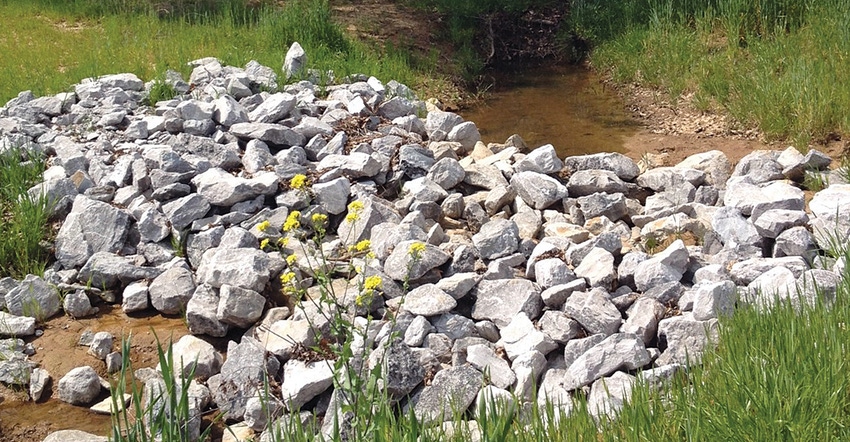March 29, 2018

This time of year seems to be a never-ending battle with Mother Nature. As the rain pours down, water levels in ditches, creeks, rivers and storm drains rise rapidly, increasing flood risk in urban and rural areas.
City planners all over the world spend countless hours and economic resources developing plans and adopting policies to reduce flood risk. The same planning and investment is warranted for private landowners and agricultural producers to prevent flooding and protect land interests and assets.
An adequate drainage system is the most common planned response to reduce flood risks on farmed land. Such a system involves maintaining watercourses, improving drainage and removing sediment that accumulates over time. Maintaining adequate drainage also requires clearing debris from channels, culverts and trash screens. Continual maintenance of a drainage system can become tiresome, but it is a critical component to well-drained and managed landscapes.
In-ditch and downstream conservation practices can help control water to protect landscapes. Water control structures like low-grade weirs can aid in slowing water flows to reduce the energy in drainage water from eroding channel bottoms and banks. Pipes with in-field slots — or risers with boards — also enable landowners to slow and control water movement.
Major benefits
There are several major benefits to managing land to be more resilient to heavy rains and less prone to flooding. Improving water infiltration — the rate at which water gets through the surface and into the soil — helps to prevent localized flooding and replenishes groundwater. Improved infiltration also can lead to potential increases in water held in soil. This benefit not only enhances water availability for plants, but also reduces runoff that can carry away nutrients and erode soil.
Leaving crop residue and/or incorporating living plants year-round can slow water flow and improve infiltration. Leaving residue and adding living cover helps to improve organic matter levels in the soil, which minimizes soil crusting or sealing. It also can improve soil water-holding capacity.
While proactive land management may seem like an unnecessary financial burden, protecting and investing in natural resources almost always saves money in the long run. Management and conservation help ensure adequate drainage, reduce flood risk and prevent minor erosion issues from becoming major concerns.
Eroding landscapes means land loss and can put livestock at risk for injury. Be aware of U.S. Department of Agriculture programs that address ongoing erosion battles. Some programs provide financial incentives to implement stream buffer zones or other conservation practices. Such practices and programs help protect land resources and slow the flow of runoff, intercept sediment and increase infiltration.
For more information about water conservation, contact Beth Baker with the Research and Education to Advance Conservation and Habitat program at MSU at (662) 325-7491 or [email protected].
About the Author(s)
You May Also Like




